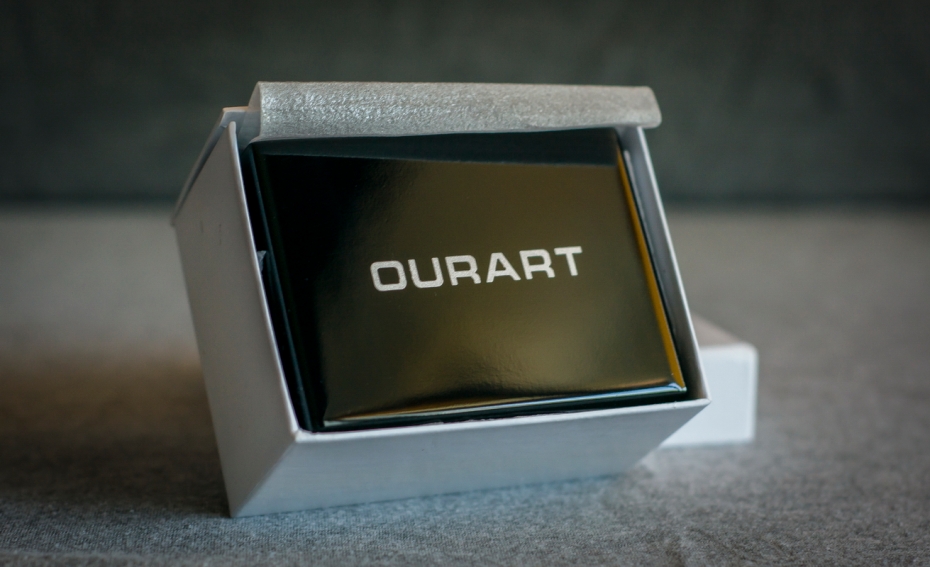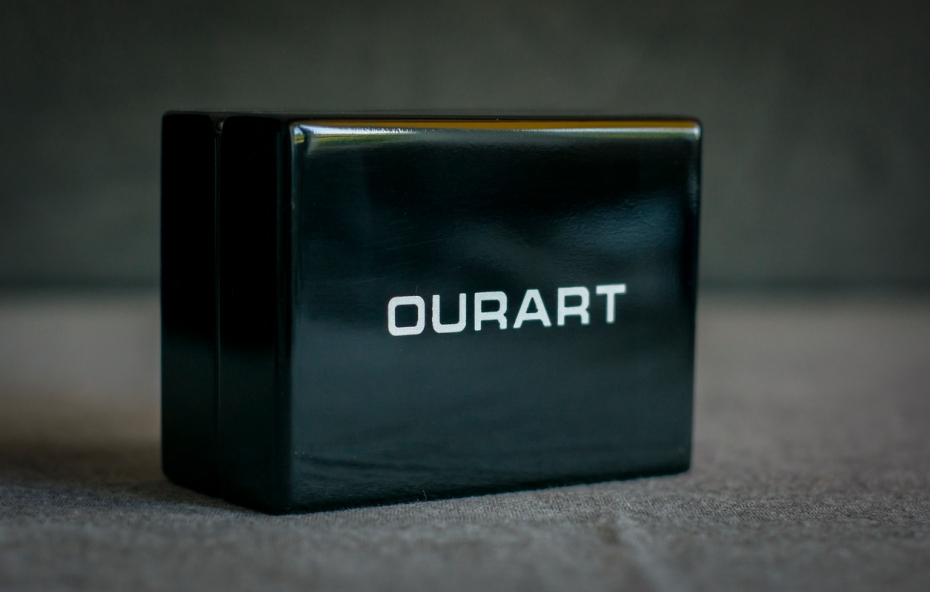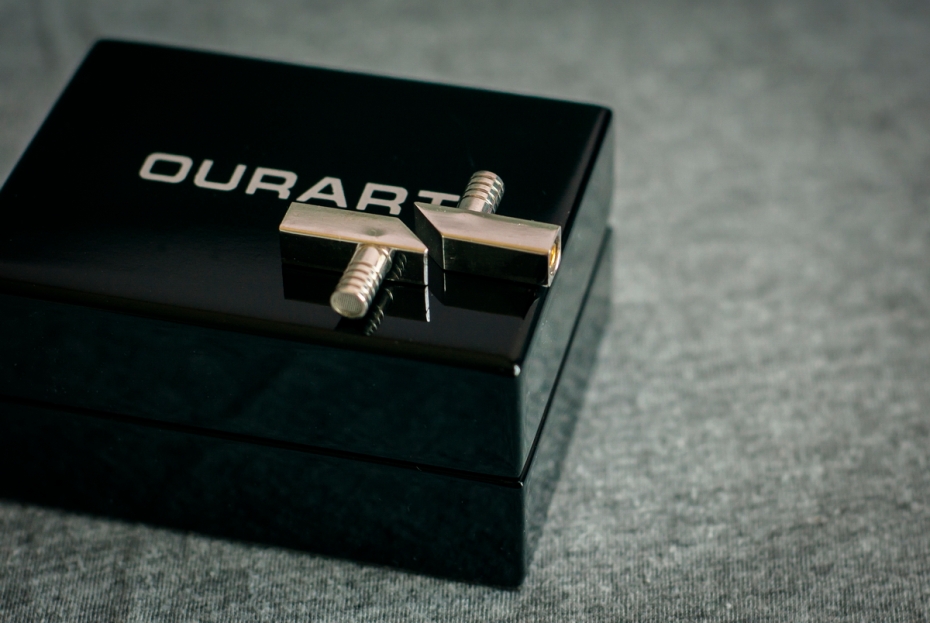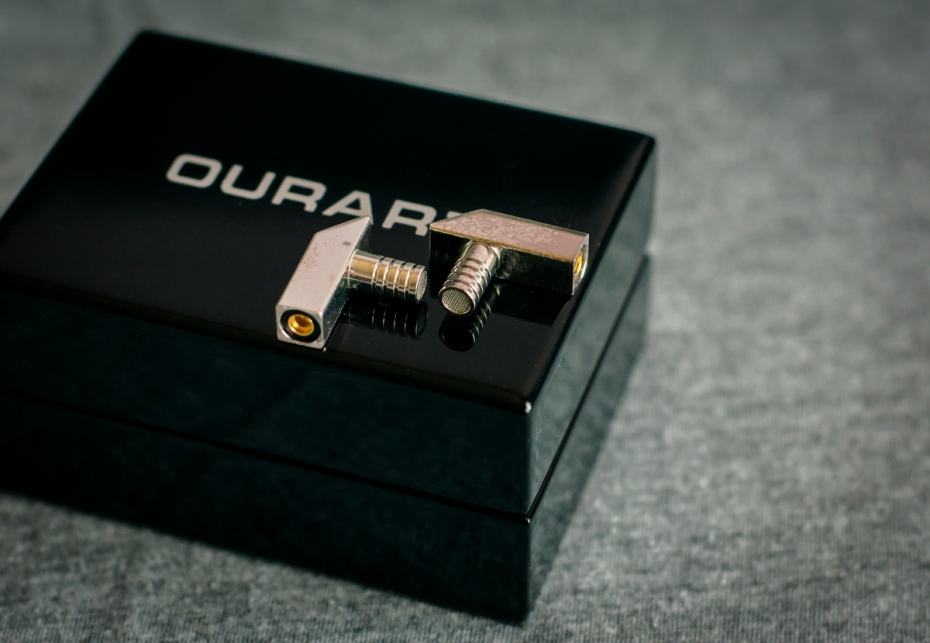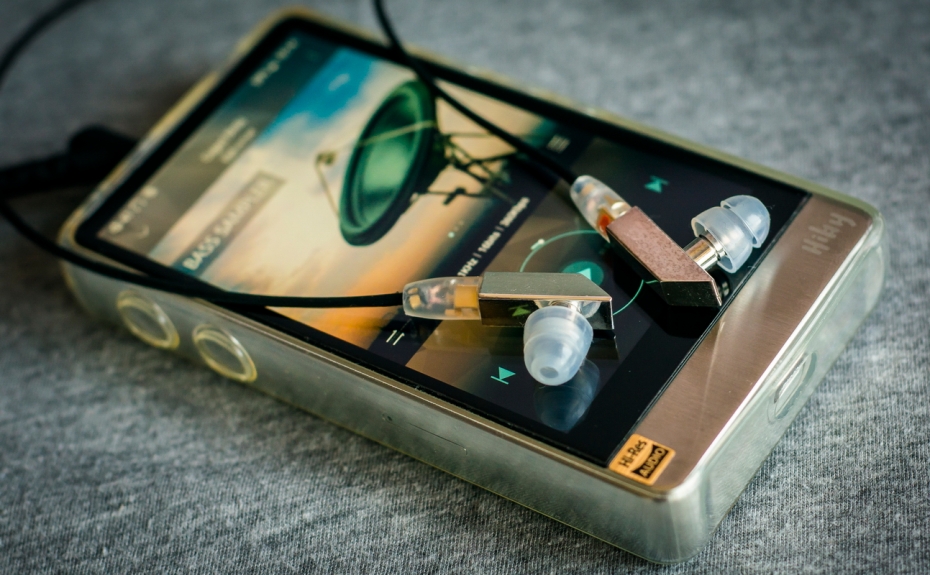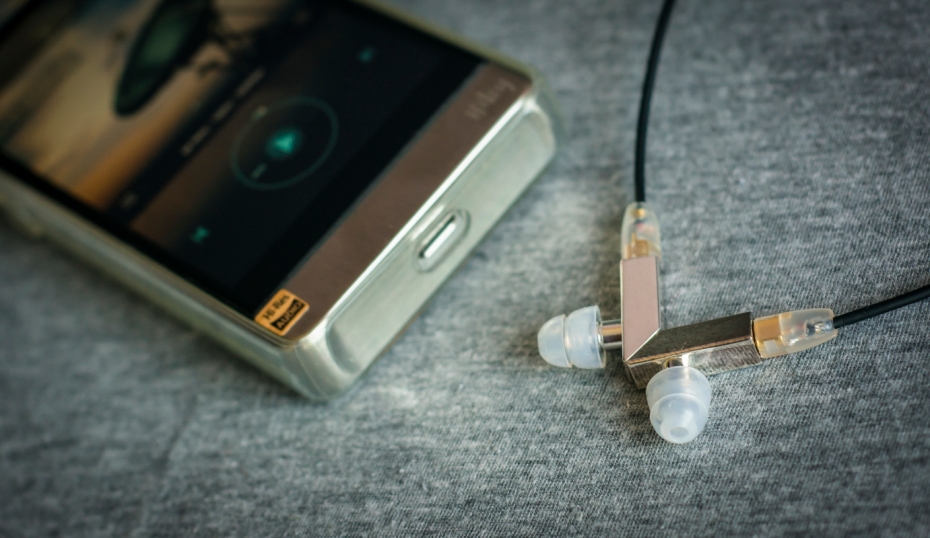Introduction
Again, another model of Ourart. In this occasion some IEMs. Again, with a very special and daring design. And as for the technology used, in countercurrent to the current trend multi drivers, as they use a single driver Balanced Armature. It is true that we have seen some models that have chosen to use a single BA, in a price range similar to that of the Tini, but really is not the general trend of the market. But in the variety is the taste and in that, Ourart is very difficult to overcome.
The first time I saw the Tini, I was reminded of a miniature bathroom faucet, LOL! Its rectangular shapes, its clear and polished aluminium, its 90-degree cylinder-shaped channel, the 45-degree cut at the top, the MMCX bottom pipe connection...But it's not water that flows through them, just music...luckily for our ears...And with this risky design, Ourart decides to implement a very neutral, relaxed and clean Full Frequency Single Balanced Armature, very appropriate for classical music, instrumental, vocal styles, Folk, Jazz, Blues, etc...All those styles that I never hear, because I have always been of electronic music, alternative, Indie, Rock and some Pop. We'll see how these tiny IEMs behave when the opposite is true, musically speaking.


Specifications


Packaging
The Tini come in a small white cardboard box. Both the cable and the silicone tips come in separate zipper bags, apart from the box. This box has a sticker on the bottom with specifications in Chinese, among other data, such as the logo of the CE certificate. Once the box is opened, a glossy black lacquered box appears, protected by a sheet of padded paper, with the brand name written in white letters and capital letters on its upper side. The chest already advances the idea that it is a jeweler, rather than a box of IEMs. And this sensation is amplified after opening it, since the Tini are completely embedded in a velvety mould, protected by a white bubble sheet. The arrangement of their placement is complementary, as they are joined by their upper bevelled face, forming a rectangular bar, with their cylindrical channels on opposite sides. After removing the protective foil, OURART can again be read in capital letters, but this time in silver, to match the smooth, shiny and polished colour of the IEMs.
Like I said, cable and tips come separately. In a summary:
The presentation is like a jewel and has been designed to protect something very delicate and beautiful.
It's surprising that the cable and the tips come apart. Also that all of them are bi or tri-flange, giving an idea that the Tini are appropriate for a deep insertion.


Construction and Design
The design is surprising and minimalist. A rectangular column, with slightly rounded edges, bevelled at 45º in its upper face, whose base is the MMCX connection. At a height of over 80%, two cylinders with grooved rings protrude, protected by a fine metal grille. Once again, a lot of art in a minimum space.
The cable, unfortunately, is not as luxurious as the capsules. It is a cable with black plastic coating, 3.5mm Jack connector at open angle, splitting piece formed by a slightly curved cylinder, cylindrical pin lined in black plastic and MMCX connector covers in semi-translucent plastic, with a simple red dot on the right side to indicate the channel.
The tips, however, are very varied and of good quality, well made, of consistent and firm plastic.


Adjustment and Ergonomics
The adjustment is simple, it can be with the cable down or over the ear. In my particular case, I use the tri-flange tips to achieve a deeper insertion. With the cable down, I find them more uncomfortable because the bottom collides with the cut of the shell, preventing a complete insertion. To avoid this, I place them with the cable upwards. So the only problem is that sometimes the bevelled part of the IEMs can rub inside the cavity. In my case it is corrected by slightly rotating the IEMs
As can be seen from my appreciations, such a special design does not have such a natural fit and may in some cases become problematic. In my particular case, a good fit on the ear, coupled with the use of large tri-flange tips, achieves the optimal fit and almost free of undesirable chafing.
Of course, the deep insertion provides remarkable insulation and lasting fixation.


Sound
Profile
The profile of the Ourart Tini is neutral with some emphasis on the upper mids, though globally mid-centric. But their true virtue is their analytical capacity: without being cold or surgical, they have a great facility to reveal even the most hidden and hidden details, discovering unknown nuances even in our favourite songs.


Bass
Achilles heel of all BA drivers, especially if it is unique and intended to cover the entire range. The physical characteristics of the Tini, IEMs with a design that doesn't leave much room for a larger BA, are seen in the lower zone, although Ourart has thought of it, providing a rear space to improve airflow and thus increase bandwidth. Be that as it may, the Tini are not recommended IEMs to enjoy the bass, nor the music that has great predominance in this area. And although the bandwidth is effective up to 20Hz, tested and perceptible, the quality of the low frequency waves are the weakest point of these IEMs.
In this way, the bass is coloured, shallow, very neutral, more perceptible as a vibration than as an LFO sensation. Even so, they are able to withstand the type with simple drums because of their good analytical capacity, but they are much more critical and limited in musical passages, where the bass layers are much more complex and abundant. A good example is Bjork's song, Hunter, with the late Mark Bell at the controls of his precious LFO. Another negative point in the Tini's lower zone is that, due to their delicacy, they are not able to hold a large bass load. If the listener likes loud music, the Tini will not be suitable, because the bass can become distorted, especially if the reproduced basses are not filtered and/or are too powerful.

Spectrum Analysis at 40Hz

Spectrum Analysis at 100Hz

Spectrum Analysis at 250Hz

Mids
We enter the sweet zone, where the Tini stand out, where they express their full potential. The midrange is balanced with some emphasis on the upper part. Although it also shows a wide hump that begins in the lower half, to finish something before the 2Khz. The variation of this range oscillates between 5dB, which can be considered quite balanced. This characteristic gives the mids its ambivalence, on the one hand there is a point of warmth, especially in male voices. On the other hand, the gain rebound between 3 and 4kHz adds brightness and a lot of cleanliness to the range. The level of detail in the midrange is revealing, as could not be expected otherwise, but not part of an ultra-analytical presentation, but of that certainly warm base, well conjugated. Thus, the definition is very good, with remarkable resolution, the notes are distinguished unique, clean and precise. The gain point in the upper mids is higher and its influence, on the negative side, together with the limited presence of the lower zone, is a lack of greater body in the voices, sounding finer, but without ever being shrill or sterile or dry. From this it can be deduced that instruments are almost more protagonists than voices, and are also highly recommended for instrumental genres.
As a whole, the mid zone could be defined with one word: delicacy. Something that does not cease to be a global characteristic of the Tini.

Spectrum Analysis at 1000Hz

Spectrum Analysis at 2500Hz

Spectrum Analysis at 4000Hz

Treble
The highs are similar to other IEMs with a similar profile: they start descending after the greater emphasis on the upper mids. This typical feature rests the central zone, discharging part of the brightness and softening a fairly sensitive zone. Then, a spike above 11kHz provides a fairly noticeable air feel, ensuring that the Tini will never sound dark or lacking in sparkle.

Spectrum Analysis at 7000Hz

Spectrum Analysis at 14000Hz

Soundstage, Separation
The Tini scene is wider than deeper. Nevertheless, they generate a good feeling of spatiality, due to their great separation and air between notes. The almost outstanding level of detail and micro details are easily revealed, effortlessly offering an open and expressive musical approach, with a great sensation of individually observable nuances and without any congestion.

Comparisons
BQEYZ KB100
The BQEYZ KB100 are hybrid IEMs, which have a frequency response with certain similarities to the Tini. Although the curve in the lower part, has a similar shape, except for volume differences, the KB100, have more linear bass and not so decayed at the sub-bass end. This is only on paper. In reality, the reproduction of the lower zone hardly keeps an auditory resemblance, being much more realistic and deep in the KB100. Already in the mids, its upper part is emphasized in the two IEMs, but this band is wider in the case of the KB100, while in the Tini it is more measured. This difference is not trivial and the sweetness, warmth and delicacy in the voices that the Tini give off, is something that is not within the reach of the BQEYZ. And in this sense the KB100 sound harder and comparatively tense, but also more frontal and explicit.
The upper zone of both is also similar in response, but the Tini offer more natural trebles and not as sharp as the KB100. There is also a greater feeling of air in the Ourart.
As far as the scene is wider and aired in the Tini and something deeper, but narrower and frontal in the KB100. The music is perceived more spaced and flows more melodiously in the Ourart, while the KB100 are more aggressive and tense, more direct and close. The separation is very good in both, superior in the Tini for the same reasons, the greater feeling of air causes more separation between planes, also.

Conclusion
Ourart Tini is a delicate and very specialized jewel. Its delicacy has nothing to do with its construction, as it is pure and resistant. But with its sound. Tini should not be mistreated with exaggerated, continuous, unfiltered and distorted basses. It is necessary to treat them with affection and to reproduce with them, musical genres that respect their limitations and extol their virtues, so that they can correspond to us with all the sweetness that they are able to provide.

Sources Used During the Analysis
Ratings
Purchase link
https://penonaudio.com/ourart-tini.html
You can read my full review in spanish here:
https://hiendportable.com/2019/05/18/ourart-tini-review/
Again, another model of Ourart. In this occasion some IEMs. Again, with a very special and daring design. And as for the technology used, in countercurrent to the current trend multi drivers, as they use a single driver Balanced Armature. It is true that we have seen some models that have chosen to use a single BA, in a price range similar to that of the Tini, but really is not the general trend of the market. But in the variety is the taste and in that, Ourart is very difficult to overcome.
The first time I saw the Tini, I was reminded of a miniature bathroom faucet, LOL! Its rectangular shapes, its clear and polished aluminium, its 90-degree cylinder-shaped channel, the 45-degree cut at the top, the MMCX bottom pipe connection...But it's not water that flows through them, just music...luckily for our ears...And with this risky design, Ourart decides to implement a very neutral, relaxed and clean Full Frequency Single Balanced Armature, very appropriate for classical music, instrumental, vocal styles, Folk, Jazz, Blues, etc...All those styles that I never hear, because I have always been of electronic music, alternative, Indie, Rock and some Pop. We'll see how these tiny IEMs behave when the opposite is true, musically speaking.


Specifications
- Driver: 2*3*4mm customized full frequency balanced armature
- Frequency range: 20-20000Hz
- Sensitivity: 95dB/mW
- Impedance: 40Ω
- Type of capsule connection: MMCX


Packaging
The Tini come in a small white cardboard box. Both the cable and the silicone tips come in separate zipper bags, apart from the box. This box has a sticker on the bottom with specifications in Chinese, among other data, such as the logo of the CE certificate. Once the box is opened, a glossy black lacquered box appears, protected by a sheet of padded paper, with the brand name written in white letters and capital letters on its upper side. The chest already advances the idea that it is a jeweler, rather than a box of IEMs. And this sensation is amplified after opening it, since the Tini are completely embedded in a velvety mould, protected by a white bubble sheet. The arrangement of their placement is complementary, as they are joined by their upper bevelled face, forming a rectangular bar, with their cylindrical channels on opposite sides. After removing the protective foil, OURART can again be read in capital letters, but this time in silver, to match the smooth, shiny and polished colour of the IEMs.
Like I said, cable and tips come separately. In a summary:
- Ourart Tini.
- Cable.
- 4 pairs of transparent silicone bi-flange tips, each pair of a different size.
- 2 pairs of translucent white silicone tri-flange tips, each pair of a different size.
- 1 pair of translucent white silicone bi-flange tips, size L.
The presentation is like a jewel and has been designed to protect something very delicate and beautiful.
It's surprising that the cable and the tips come apart. Also that all of them are bi or tri-flange, giving an idea that the Tini are appropriate for a deep insertion.


Construction and Design
The design is surprising and minimalist. A rectangular column, with slightly rounded edges, bevelled at 45º in its upper face, whose base is the MMCX connection. At a height of over 80%, two cylinders with grooved rings protrude, protected by a fine metal grille. Once again, a lot of art in a minimum space.
The cable, unfortunately, is not as luxurious as the capsules. It is a cable with black plastic coating, 3.5mm Jack connector at open angle, splitting piece formed by a slightly curved cylinder, cylindrical pin lined in black plastic and MMCX connector covers in semi-translucent plastic, with a simple red dot on the right side to indicate the channel.
The tips, however, are very varied and of good quality, well made, of consistent and firm plastic.


Adjustment and Ergonomics
The adjustment is simple, it can be with the cable down or over the ear. In my particular case, I use the tri-flange tips to achieve a deeper insertion. With the cable down, I find them more uncomfortable because the bottom collides with the cut of the shell, preventing a complete insertion. To avoid this, I place them with the cable upwards. So the only problem is that sometimes the bevelled part of the IEMs can rub inside the cavity. In my case it is corrected by slightly rotating the IEMs
As can be seen from my appreciations, such a special design does not have such a natural fit and may in some cases become problematic. In my particular case, a good fit on the ear, coupled with the use of large tri-flange tips, achieves the optimal fit and almost free of undesirable chafing.
Of course, the deep insertion provides remarkable insulation and lasting fixation.


Sound
Profile
The profile of the Ourart Tini is neutral with some emphasis on the upper mids, though globally mid-centric. But their true virtue is their analytical capacity: without being cold or surgical, they have a great facility to reveal even the most hidden and hidden details, discovering unknown nuances even in our favourite songs.


Bass
Achilles heel of all BA drivers, especially if it is unique and intended to cover the entire range. The physical characteristics of the Tini, IEMs with a design that doesn't leave much room for a larger BA, are seen in the lower zone, although Ourart has thought of it, providing a rear space to improve airflow and thus increase bandwidth. Be that as it may, the Tini are not recommended IEMs to enjoy the bass, nor the music that has great predominance in this area. And although the bandwidth is effective up to 20Hz, tested and perceptible, the quality of the low frequency waves are the weakest point of these IEMs.
In this way, the bass is coloured, shallow, very neutral, more perceptible as a vibration than as an LFO sensation. Even so, they are able to withstand the type with simple drums because of their good analytical capacity, but they are much more critical and limited in musical passages, where the bass layers are much more complex and abundant. A good example is Bjork's song, Hunter, with the late Mark Bell at the controls of his precious LFO. Another negative point in the Tini's lower zone is that, due to their delicacy, they are not able to hold a large bass load. If the listener likes loud music, the Tini will not be suitable, because the bass can become distorted, especially if the reproduced basses are not filtered and/or are too powerful.

Spectrum Analysis at 40Hz

Spectrum Analysis at 100Hz

Spectrum Analysis at 250Hz

Mids
We enter the sweet zone, where the Tini stand out, where they express their full potential. The midrange is balanced with some emphasis on the upper part. Although it also shows a wide hump that begins in the lower half, to finish something before the 2Khz. The variation of this range oscillates between 5dB, which can be considered quite balanced. This characteristic gives the mids its ambivalence, on the one hand there is a point of warmth, especially in male voices. On the other hand, the gain rebound between 3 and 4kHz adds brightness and a lot of cleanliness to the range. The level of detail in the midrange is revealing, as could not be expected otherwise, but not part of an ultra-analytical presentation, but of that certainly warm base, well conjugated. Thus, the definition is very good, with remarkable resolution, the notes are distinguished unique, clean and precise. The gain point in the upper mids is higher and its influence, on the negative side, together with the limited presence of the lower zone, is a lack of greater body in the voices, sounding finer, but without ever being shrill or sterile or dry. From this it can be deduced that instruments are almost more protagonists than voices, and are also highly recommended for instrumental genres.
As a whole, the mid zone could be defined with one word: delicacy. Something that does not cease to be a global characteristic of the Tini.

Spectrum Analysis at 1000Hz

Spectrum Analysis at 2500Hz

Spectrum Analysis at 4000Hz

Treble
The highs are similar to other IEMs with a similar profile: they start descending after the greater emphasis on the upper mids. This typical feature rests the central zone, discharging part of the brightness and softening a fairly sensitive zone. Then, a spike above 11kHz provides a fairly noticeable air feel, ensuring that the Tini will never sound dark or lacking in sparkle.

Spectrum Analysis at 7000Hz

Spectrum Analysis at 14000Hz

Soundstage, Separation
The Tini scene is wider than deeper. Nevertheless, they generate a good feeling of spatiality, due to their great separation and air between notes. The almost outstanding level of detail and micro details are easily revealed, effortlessly offering an open and expressive musical approach, with a great sensation of individually observable nuances and without any congestion.

Comparisons
BQEYZ KB100
The BQEYZ KB100 are hybrid IEMs, which have a frequency response with certain similarities to the Tini. Although the curve in the lower part, has a similar shape, except for volume differences, the KB100, have more linear bass and not so decayed at the sub-bass end. This is only on paper. In reality, the reproduction of the lower zone hardly keeps an auditory resemblance, being much more realistic and deep in the KB100. Already in the mids, its upper part is emphasized in the two IEMs, but this band is wider in the case of the KB100, while in the Tini it is more measured. This difference is not trivial and the sweetness, warmth and delicacy in the voices that the Tini give off, is something that is not within the reach of the BQEYZ. And in this sense the KB100 sound harder and comparatively tense, but also more frontal and explicit.
The upper zone of both is also similar in response, but the Tini offer more natural trebles and not as sharp as the KB100. There is also a greater feeling of air in the Ourart.
As far as the scene is wider and aired in the Tini and something deeper, but narrower and frontal in the KB100. The music is perceived more spaced and flows more melodiously in the Ourart, while the KB100 are more aggressive and tense, more direct and close. The separation is very good in both, superior in the Tini for the same reasons, the greater feeling of air causes more separation between planes, also.

Conclusion
Ourart Tini is a delicate and very specialized jewel. Its delicacy has nothing to do with its construction, as it is pure and resistant. But with its sound. Tini should not be mistreated with exaggerated, continuous, unfiltered and distorted basses. It is necessary to treat them with affection and to reproduce with them, musical genres that respect their limitations and extol their virtues, so that they can correspond to us with all the sweetness that they are able to provide.

Sources Used During the Analysis
- xDuoo X3II
- Burson Audio Playmate
- Zishan Z2
- Sabaj Da3
Ratings
- Construction and Design: 95
- Adjustment/Ergonomics: 80
- Accessories: 65
- Bass: 55
- Mids: 90
- Treble: 80
- Separation: 90
- Soundstage: 80
- Quality/Price: 80
Purchase link
https://penonaudio.com/ourart-tini.html
You can read my full review in spanish here:
https://hiendportable.com/2019/05/18/ourart-tini-review/

